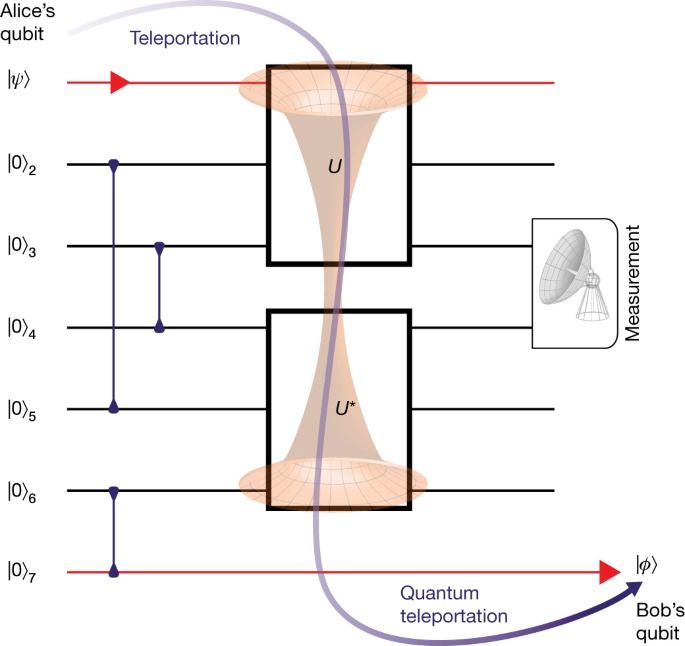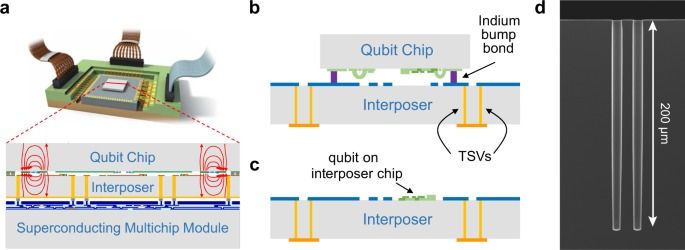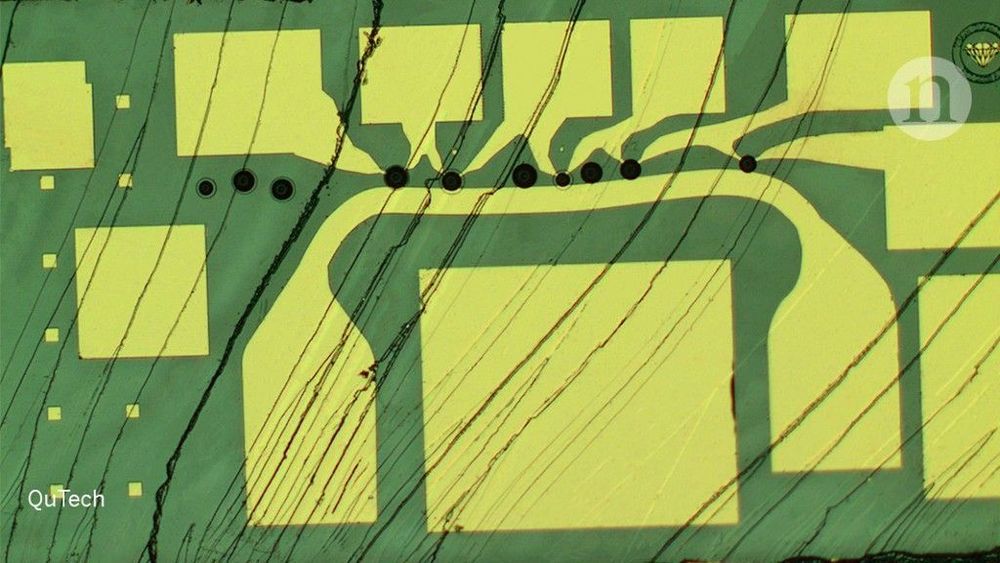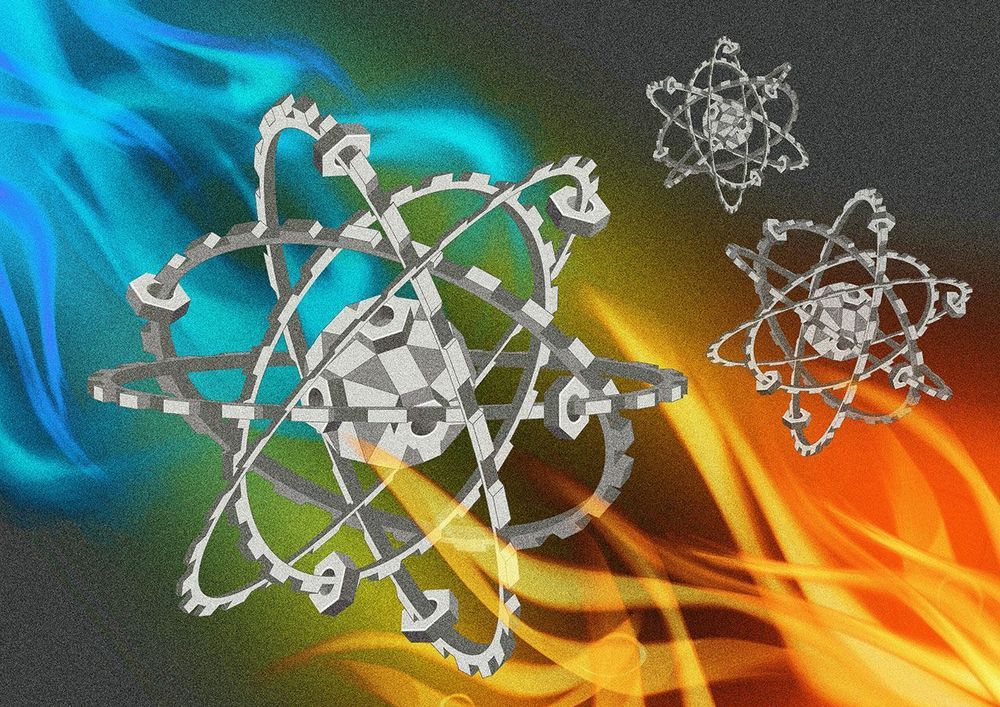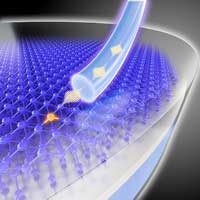Circa 2019
Quantum scrambling is the dispersal of local information into many-body quantum entanglements and correlations distributed throughout an entire system. This concept accompanies the dynamics of thermalization in closed quantum systems, and has recently emerged as a powerful tool for characterizing chaos in black holes1,2,3,4. However, the direct experimental measurement of quantum scrambling is difficult, owing to the exponential complexity of ergodic many-body entangled states. One way to characterize quantum scrambling is to measure an out-of-time-ordered correlation function (OTOC); however, because scrambling leads to their decay, OTOCs do not generally discriminate between quantum scrambling and ordinary decoherence. Here we implement a quantum circuit that provides a positive test for the scrambling features of a given unitary process5,6. This approach conditionally teleports a quantum state through the circuit, providing an unambiguous test for whether scrambling has occurred, while simultaneously measuring an OTOC. We engineer quantum scrambling processes through a tunable three-qubit unitary operation as part of a seven-qubit circuit on an ion trap quantum computer. Measured teleportation fidelities are typically about 80 per cent, and enable us to experimentally bound the scrambling-induced decay of the corresponding OTOC measurement.
